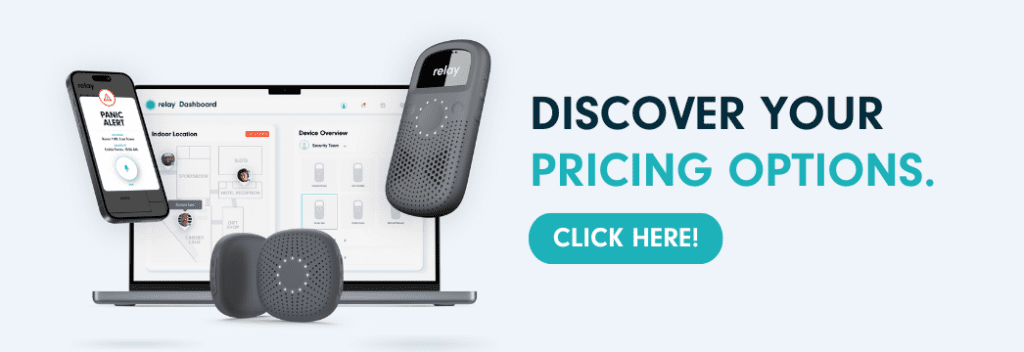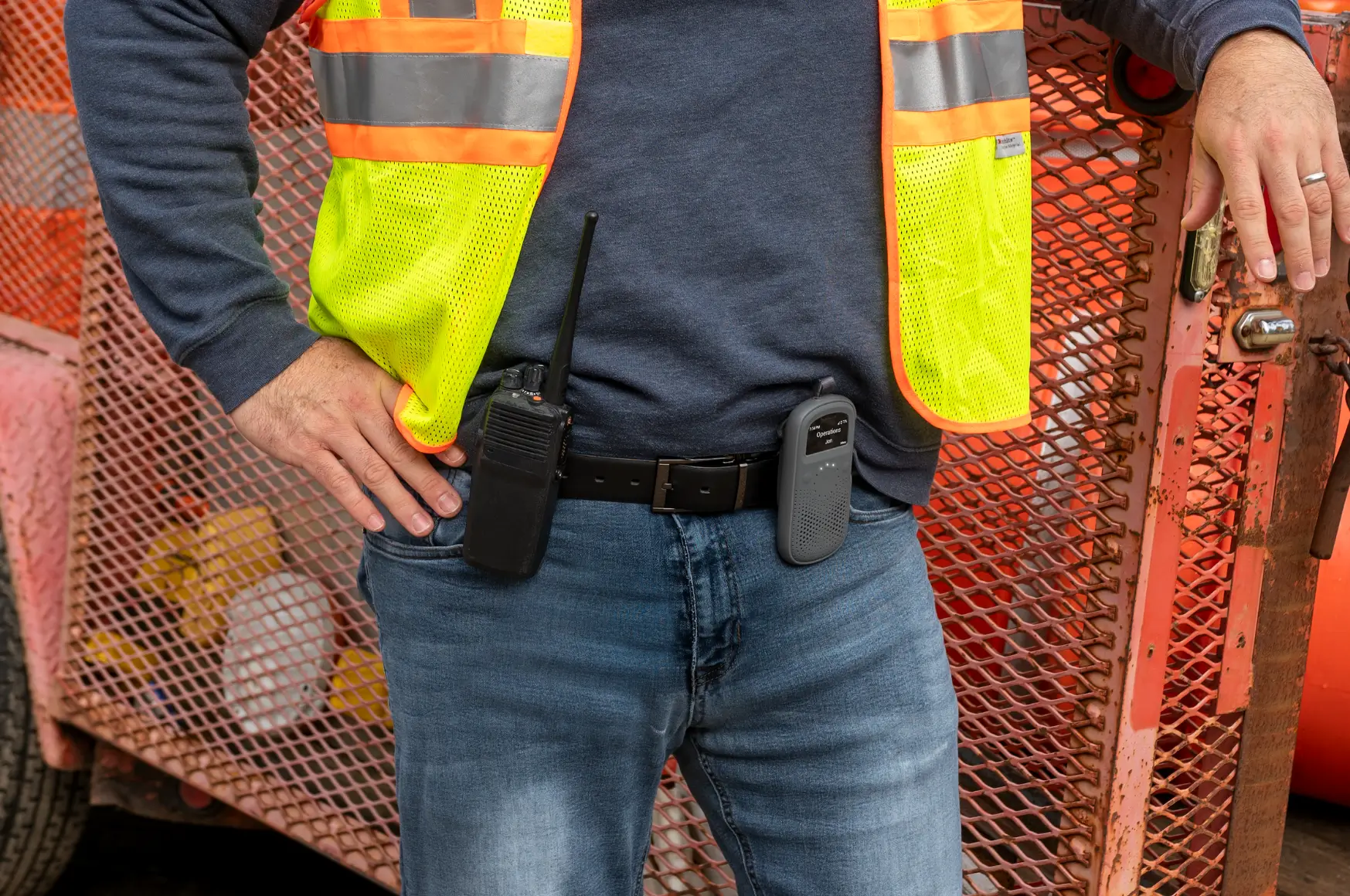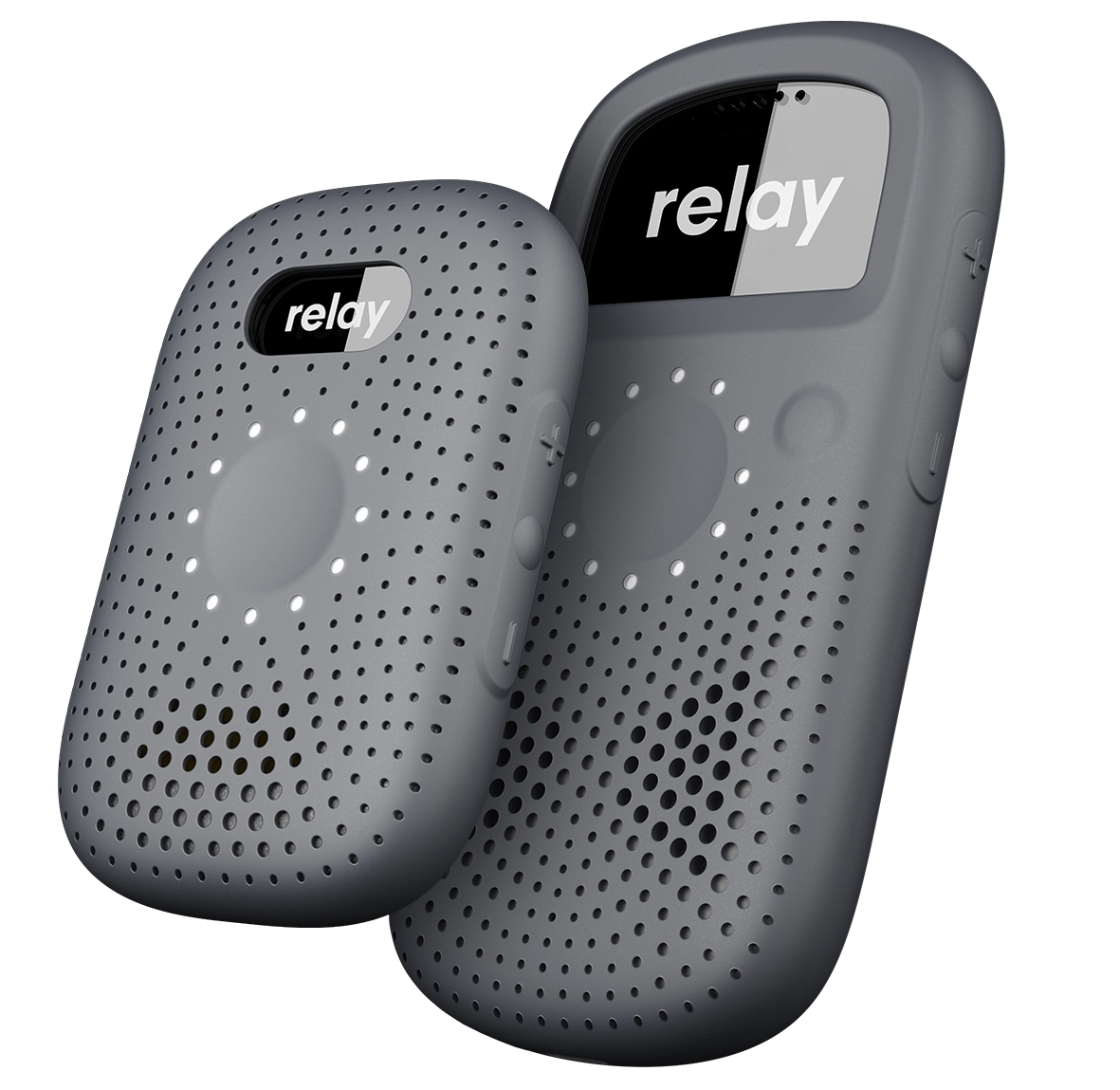Businesses – from warehouses to hotels – have been using two-way radios and walkie-talkies for decades. Members of the public also use walkie-talkies, but for very different reasons from professionals.
The terms “2-way radio” and “walkie-talkie” are often used interchangeably, but there are key differences between the devices. There’s also a difference between smart radios and walkie-talkies or two way-radios. These distinctions are important to consider when purchasing your preferred device.
In this article, we’ll explore the differences between two-way radios vs walkie-talkies, and share tips on which is best for business vs personal use.
Is There a Difference? Comparing Two-Way Radios vs Walkie-Talkies
Here’s a summary of the main differences between a walkie-talkie vs radio:
| Two-way radio | Walkie-talkies |
| Can be handheld and portable, or stationary (e.g., built into a vehicle) | Only handheld and portable |
| Often refers to radios that require a FCC license or subscription to use | If using for personal use, FRS walkie talkies don’t require additional licenses or a subscription |
| Typically operates using radio frequencies, though modern-day smart radios use Push-to-Talk over Cellular (POC), which utilize 4G/LTE/5G or Wi-Fi | Operates using radio frequencies |
| Often refers to radios with longer range | Often has a short range, between 2-5 kilometres (learn more about walkie-talkie ranges) |
| Generally used for business and professional communication | Can be used for business or personal use (e.g., by hikers, neighbors, or volunteers) |
| Advanced devices, like smart radios, may have additional features for business, e.g., app connectivity, dashboard access, live language translation, 1:1 calls, group communication, panic buttons, etc. | Simpler devices, with only the ability to push-to-talk and communicate with devices in range |
| Depending on the brand, devices can be purchased or managed by a host provider, bought directly from the brand, or “rented” for business use | The device can typically be easily purchased from major retailers like Walmart or Amazon |
Which is Better, a Walkie-Talkie or Two-Way Radio?
While they are essentially the same thing, a two-way radio generally refers to a more robust version of a walkie-talkie. They can have better range and may use cellular networks.
For personal communication (like communicating on your property or during a short hike), a walkie-talkie can be considered better. They are quick and easy to set up, and they use radio connectivity, which is free to access (although it has its downsides in terms of reliability).
For business, a two-way radio with better range, durability, and battery life is often best.
If you need more than the basics or nationwide connectivity, a smart radio (another walkie-talkie alternative) may be what you’re looking for. For example, a Relay radio is a smart radio that offers advanced functionality, reliable connectivity, and access to business-enhancing features (e.g., location tracking and lone working panic buttons).

Pros and Cons of Walkie-Talkies
A walkie-talkie is a handheld, portable device with an antenna that connects to radio channels. To communicate, you push the button, speak into the device, and release to hear the response. The secondary device must be on the same channel and in range for you to exchange messages.
Pros of a Walkie-Talkie
- Easy to set up
- Can be purchased easily in most convenience stores or online
- Doesn’t regularly require a subscription to run
Cons of a Walkie Talkie
- Very limited range
- Unreliable connectivity
- Can experience interference in the open channels
- Channels are not private, making communication non-confidential
- Prone to “deadzones” (i.e., areas of no signal)
- In poor signal areas, communication can be hard to understand
Pros and Cons of Smart Radios
Smart radios work similarly to a walkie-talkie (communication with the push of a button), with more advanced features and modern capabilities. They often connect to an app or dashboard that enables you to track live locations, gain operational insights, monitor panic alerts, send group broadcasts, and more.
Learn more about the ROI of investing in a smart radio.
Pros of Smart Radios (Like Relay)
- Clear and crisp communication between devices
- Triple-redundancy connectivity minimizes “deadzones”
- Nationwide coverage (combining Wi-Fi and cellular networks)
- Private channels offer confidentiality
- Larger range of channels (up to 1,000 with Relay)
- Water-resistant and durable against drops and shocks
Cons of Smart Radios (Like Relay)
- May require an annual software subscription which typically includes real-time data, operational insights, product updates, and 24/7 customer support (see Relay’s pricing).

How to Choose the Right Radio For Your Business
Here’s a quick guide on the most important features to look for in a radio for your business, to help you choose the most effective device.
Range and coverage
Walkie-talkies, two-way radios and smart radios operate with different range and coverage. When purchasing a business radio, ensuring you have the right coverage is the most important factor.
Without it, your employees won’t be able to communicate effectively, which can affect productivity and even the safety of your workforce. Here’s a quick guide to the range and coverage available:
- Walkie-talkies and two-way radios: Offer short and long ranges, usually up to 2-5km, but can be subject to interference and poor signal the more walls or obstructions are in the perimeter
- Smart radios: Simultaneously using cellular networks and Wi-Fi to provide nationwide coverage and a clear signal at all times (as seen with Relay radios – see pricing)
Battery life/charge time
Most businesses require a radio with an extended battery life to last a worker’s entire shift, even when they use it frequently.
Typically, a business will want a radio with a battery life of up to 12 hours, but it depends on how long a typical shift is. You also want a device with fast charging to ensure efficient workplace operations.
Relay radios typically provide up to 24 hours of battery life, which ensures your employees can use the device across multiple shifts. Our multi-unit charging station can charge up to six devices at once, with each device taking less than 2 hours to charge fully.
Durability/water-resistance
All industries need a radio that’s strong enough to last for years, even when employees drop the device or knock it during their shifts. Just how durable your radios should be depends on the environment and typical hazards.
For example:
- Will employees use the radios outside in all weathers?
- Will the radios be used around water or poolsides?
- Could the radios be dropped from height?
- How hot or humid are the temperatures in the workplace?
Relay radios are durable by design, with silicone wrapping, tight seals, and no protruding parts. No antennas mean less replacements, and its water-resistance makes it submersible to 1.5m depths for up to 30 minutes.
We’ve tested our devices against MIL STD-810G for temperature extremes, shock/drop, vibration, high humidity, and salt fog exposure to ensure durability for your business.
Audio quality
Ensuring clear, crisp audio is important for any business – particularly frontline teams or workplaces that rely on fast communications and decision-making. It’s especially important in busy workplaces, where background noise can quickly affect team decisions.
Relay radios ensure communication is transmitted in less than a second between devices. We use multiple 4G LTE networks and WiFi to provide redundant connectivity. With clear audio (and no interference), employees can communicate effectively – even in noisy settings.
Productivity features
Some devices come with additional features specifically designed for businesses to boost productivity in the workplace. For example, Relay radios include:
- Dashboard and app
- Cloud data insights
- Real-time location tracking
- Live language translation
- Continuous device monitoring
- Real-time performance trends
Discover more about Relay radio’s business productivity features.
Safety needs
Worker radios can be critical devices in an emergency situation. Fast, responsive communication can help keep employees safe, particularly lone workers or those operating in high-risk environments.
Devices like Relay include an easy-to-use panic alert system, which delivers fast alerts (sounded or silent) in an emergency situation.
Live location tracking helps response teams locate employees in distress, while the two-way communication helps the right help reach them.
Learn more about duress alarms for businesses.
Ease of use
It’s essential for most workforces that a device is simple by design, making it easy for new employees to settle in and established employees to adapt.
It also needs to be suitable for the environment, with a lightweight design and secure clips to keep it within their possession while working.
Relay devices are lightweight and come with strong, durable fastenings to ensure they stay secured at all times.
Simplicity is integral to the design of Relay, with simple-to-use technology and a maximum of four buttons per device, making it easy for any employee to use.
Using Relay Radios For Business: How Can We Benefit Your Workplace?
Relay ticks all the boxes for businesses searching for an easy, reliable communications device. Our ultra-durable radios use push-to-talk technology over cellular/Wi-Fi, making it simple to keep teams connected.
Our devices also include a built-in live translation feature on every plan, allowing all workers to communicate in their preferred language.
With Relay, communication is simple, efficient, and consistent – surpassing the limits of two-way radios by allowing communication with other Relay devices as well as the Relay app and dashboard.
Read our customer stories to learn how businesses are using Relay smart radios to enhance safety, communications, and efficiency.



